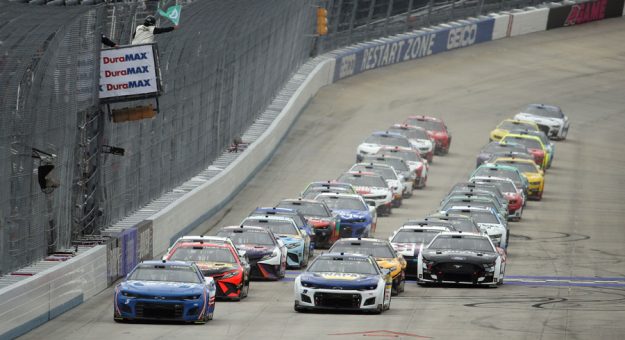CONCORD, N.C. — Change is inevitable in everything. If you don’t change, you don’t grow, and if you don’t grow, you get passed by.
That’s why you see the motorsports landscape changing in ways that 10 years ago were considered immutable and impossible.
NASCAR’s change to stage racing has come and gone and is now accepted. Given the short attention span of most audiences these days, it made sense, and it has indeed ramped up some positive reviews.
The thought of sitting through 500 laps (or 400 laps, given the shrinking TV windows available) at Dover (Del.) Motor Speedway again is not one that will excite any but the most long-term fans.
The new Cup Series car is still teething and when it reaches the second half of the season, it will be more evident as to whether the experiment is working or not. By and large, it has been successful in most categories, but there is work to do.
If you consider today’s constraints on time and money, IndyCar has figured it out the best among national series.
The short-ish races are conducted at a variety of tracks designed to create excitement, the competition is flat-out the best from the front of the field to the back and the TV package is certainly structured around presenting the best entertainment.
I have to say the announcing team has it down as well.
Leigh Diffey and Co. will wring every last millisecond of action from every race, and it’s contagious.
Formula 1 is more in NASCAR’s boat these days, with a new car and a change at the top of the pecking order. The free-fall (for them) of Mercedes has provided a chance for Red Bull and Ferrari, and more is better when you’re talking about competition.
Gone are the days of one driver or team winning 90 percent of the races, or at least that’s the way it’s looking.
The new U.S. round in Miami was a bell-ringer for the sport here, and Ralph Sanchez’s dream of an F-1 race in the Florida city was finally realized. A tireless promoter of motorsports, Sanchez was sadly not around when it happened (he died in 2013), but I could feel his influence in the new venue.
Speaking of venues, the track itself seems to be the best of all worlds, and that is something in this day and age. Combine that with the earth-shaking debut of Circuit of The Americas nearly a decade ago, the arrival of a Las Vegas round (again) in 2023 and F-1 racing has as strong a hold as it ever has in the continental U.S.
NHRA, which recently conducted a race near my home in Concord (the dogs have finally quieted down, just keeps on keeping on. The speed and sound of the pro classes is faster and louder than ever, and with John Force still competing, it’s still the mecca for gearheads.
Plus, the famously fan-friendly events are still the best value in the sport.
What concerns me most, as an old short-track guy, is the current shortage of tires on a nationwide basis. Running a 200-lap late model race on just six tires is a feat in and of itself, and it works, but it would work better with eight.
Economics are to blame, as well as the status of the world today and the on-off status of the pandemic, and this situation doesn’t seem as if it will change any time soon.
If a reasonable compromise can be reached, that should go away, but if it doesn’t…
That’s not even considering the fuel situation these days. With all sorts of machinations going on vis-à-vis worldwide fuel status and the push to electric cars — don’t get me started — there is a very real chance our sport could change and it likely won’t be for the better.
Still, there’s plenty to be excited about with the state of motorsports. Let’s hope it stays that way and solutions can be found for some of the difficulties.
